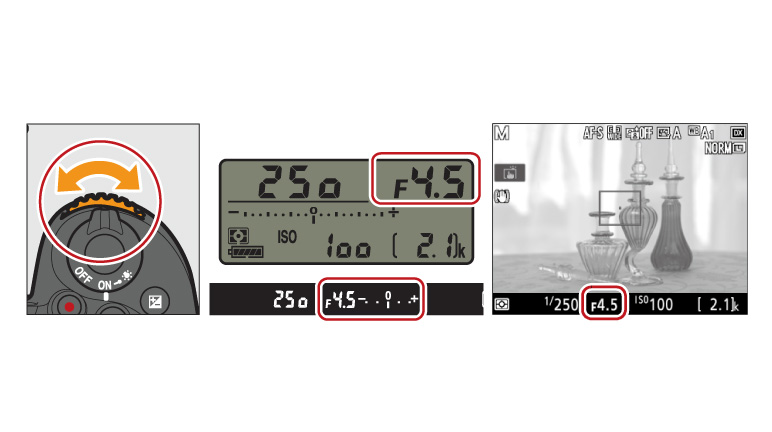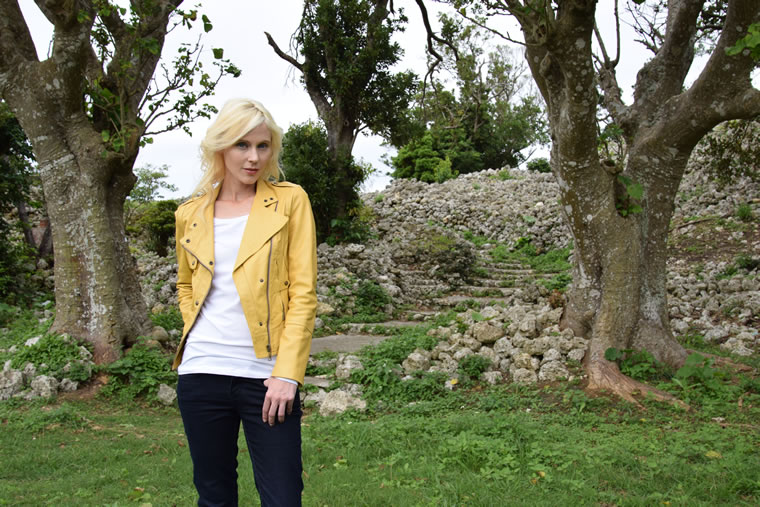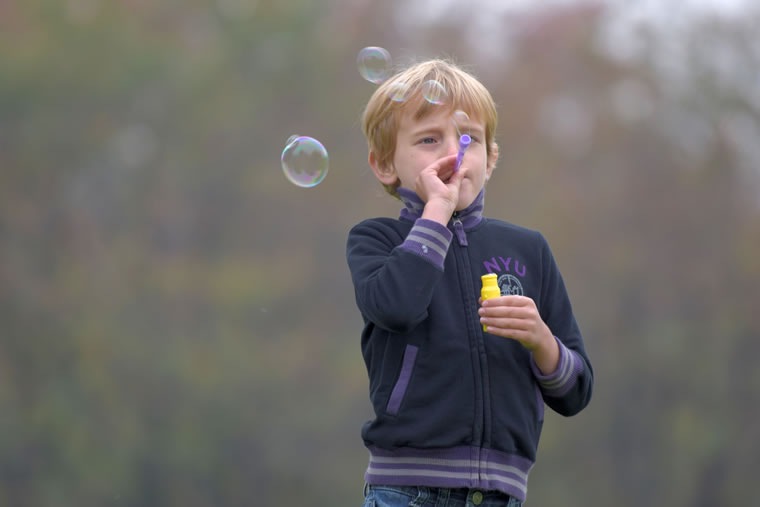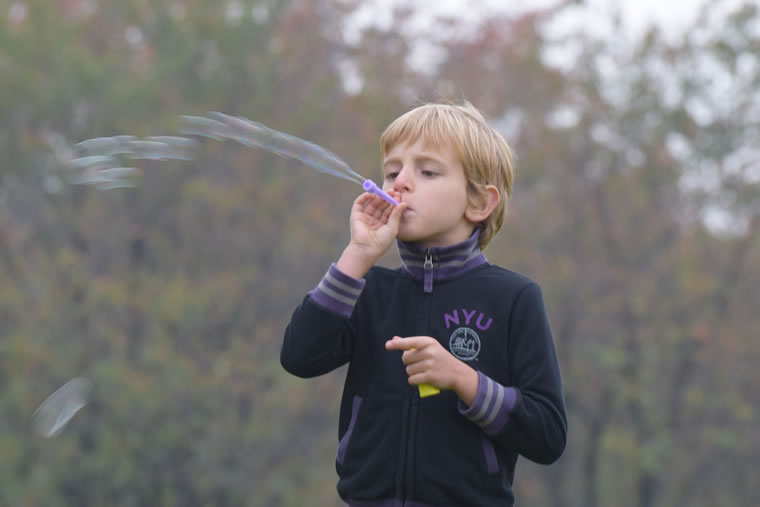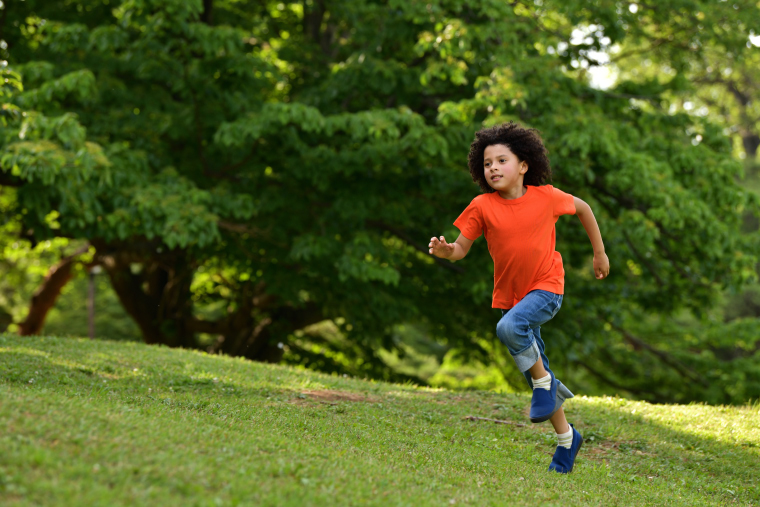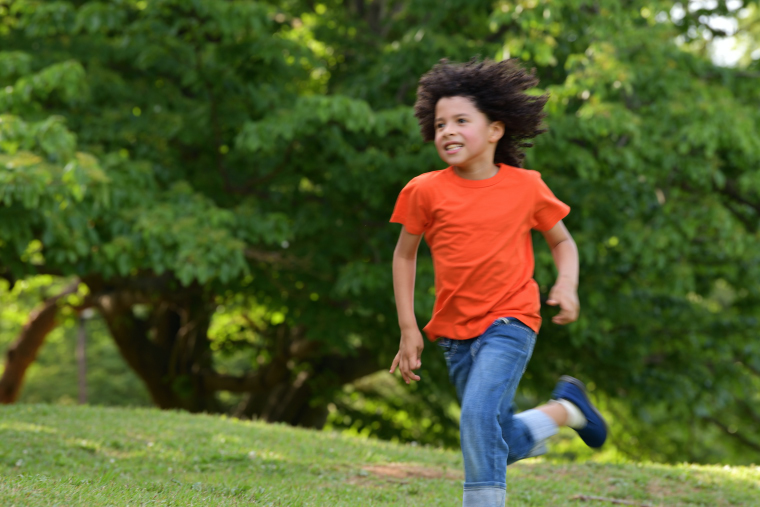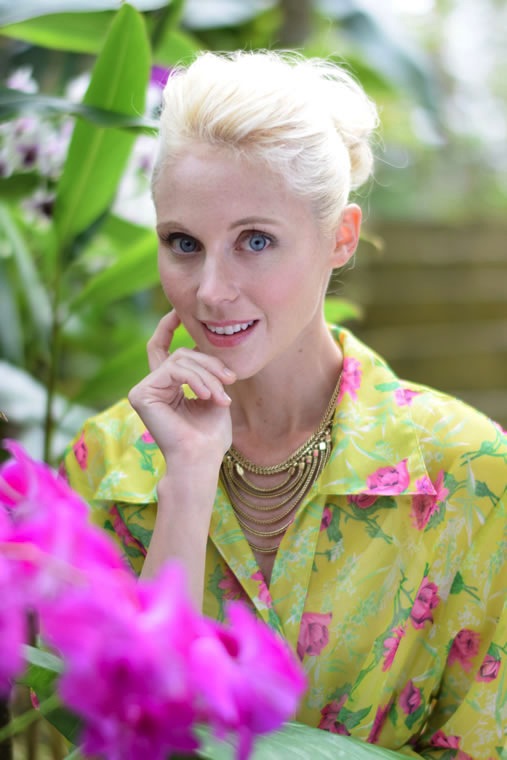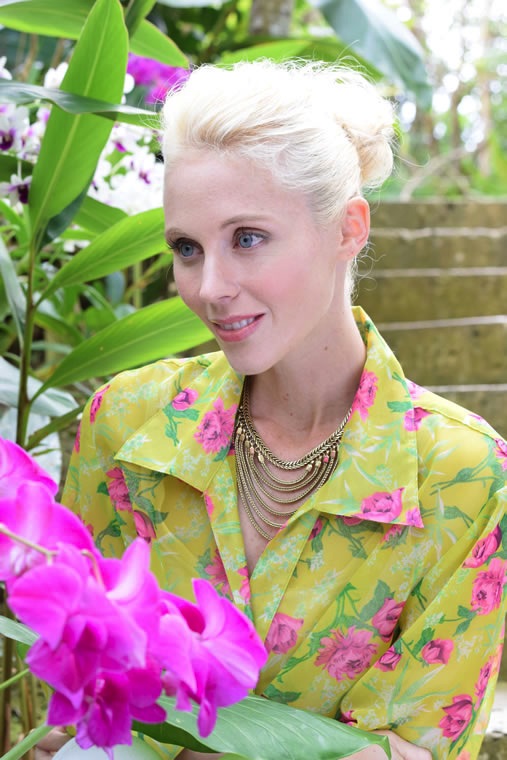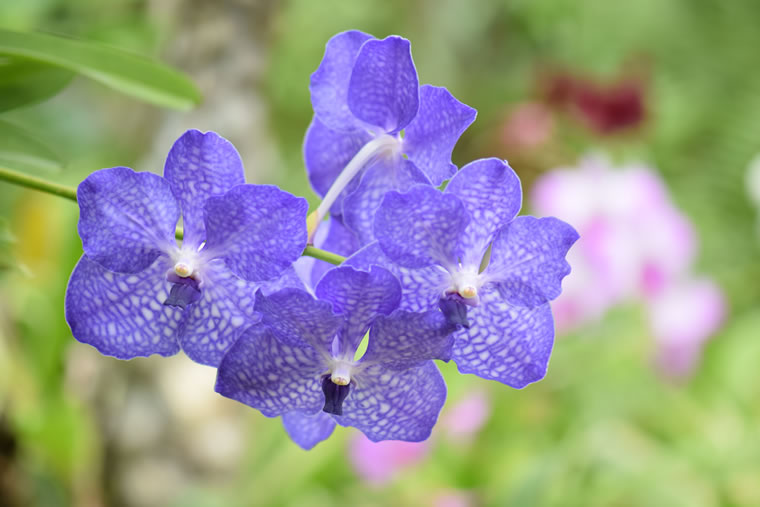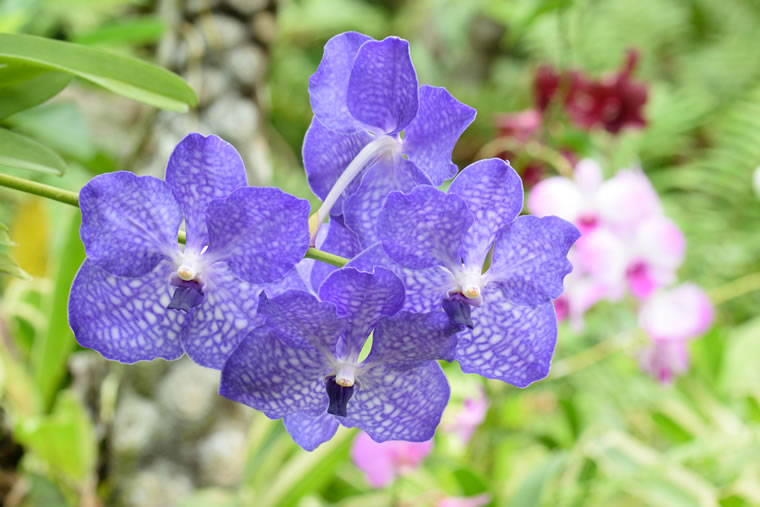P, S, A, and M Modes
P, S, A, and M
modes are referred to as "exposure modes" because they let you control settings that
determine exposure, namely shutter speed and aperture. Each of these modes offer different
degrees of control over shutter speed and aperture. ![]() Exposure
Mode: Mode P (Programmed Auto)
Exposure
Mode: Mode P (Programmed Auto)
In mode P, the camera automatically
adjusts shutter speed and aperture for optimal exposure. You can, however, choose
other aperture and shutter speed combinations that will produce the same exposure:
this is called "flexible program". Choose programmed auto for snapshots and in other
situations in which you don't want to miss a shot.
![]() Exposure Mode: Mode S (Shutter-Priority Auto)
Exposure Mode: Mode S (Shutter-Priority Auto)
You choose
the shutter speed and let the camera automatically adjust aperture for optimal exposure.
Use to emphasize motion.
"Shutter speed" is the time the shutter is open during an exposure. It is usually expressed in seconds or fractions of a second: 1 s, 1/2 s, 1/4 s ... 1/250 s, 1/500 s. Fast shutter speeds reduce the amount of light that reaches the image sensor, while slow shutter speeds increase it.
![]() Exposure Mode: Mode A (Aperture-Priority Auto)
Exposure Mode: Mode A (Aperture-Priority Auto)
You choose
the aperture and let the camera automatically adjust shutter speed for optimal exposure.
Use to control background blur.
Aperture controls the amount of light reaching the image sensor and is usually expressed
as an "f-number": f/1.4, f/2, f/3.5, f/5.6, f/8, f/11, f/16, f/22, f/32.
Changing the f-number changes the size of the opening through which light enters
the camera (the aperture) and thereby changes the amount of light passing through
the lens. High f-numbers stop the aperture down, allowing less light into the camera,
while low f-numbers increase the size of the aperture and let more light into the
camera. Going from an aperture of f/4 to f/5.6 reduces the amount of light entering
the camera by half and halves the brightness of the image on the image sensor.
![]() Exposure Mode: Mode M (Manual)
Exposure Mode: Mode M (Manual)
You choose both the aperture
and the shutter speed. Manual mode even offers a shutter speed of "bulb" for long
exposures. Because you control both aperture and shutter speed, manual mode offers
great scope for expression. But choose the wrong combination and your photo will be
too bright or too dark, or in other words over- or under-exposed. Keep your eye on
the exposure indicator when choosing aperture and shutter speed.
Procedure
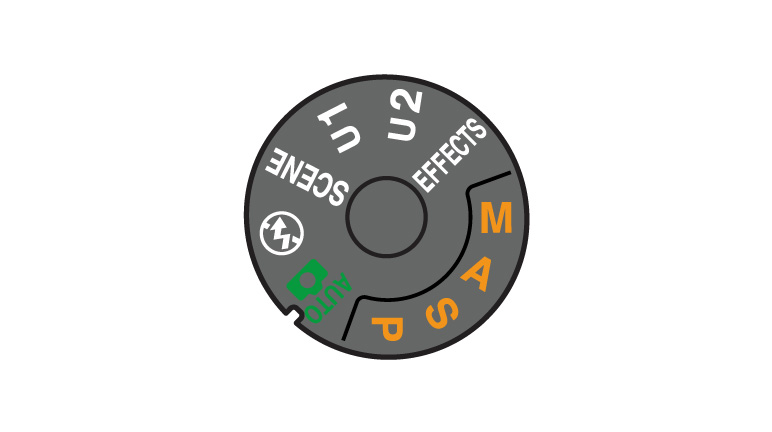
P: Programmed Auto
S: Shutter-Priority Auto
A: Aperture-Priority Auto
M: Manual
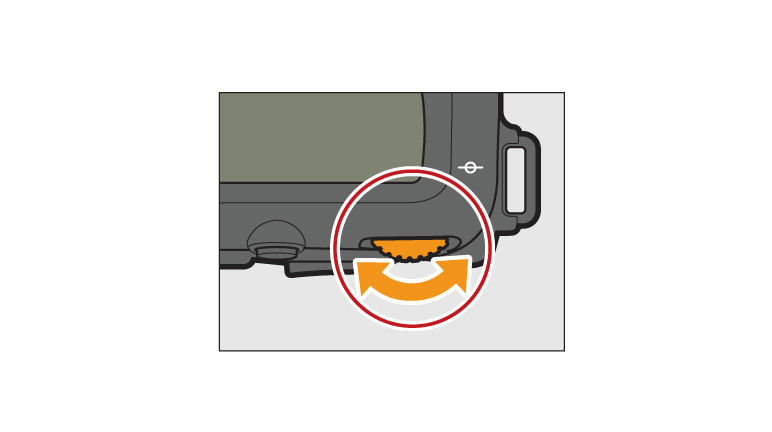
In mode P, different combinations of shutter speed and aperture can be selected by rotating the main command dial while the exposure meters are on (“flexible program”).
Rotate the dial to the right for large apertures (low f-numbers) that blur background details or fast shutter speeds that “freeze” motion. Rotate the dial to the left for small apertures (high f-numbers) that increase depth of field or slow shutter speeds that blur motion.
All combinations produce the same exposure. While flexible program is in effect, a flexible program indicator (
To restore default shutter speed and aperture settings, rotate the main command dial until the indicator is no longer displayed, choose another mode, or turn the camera off.
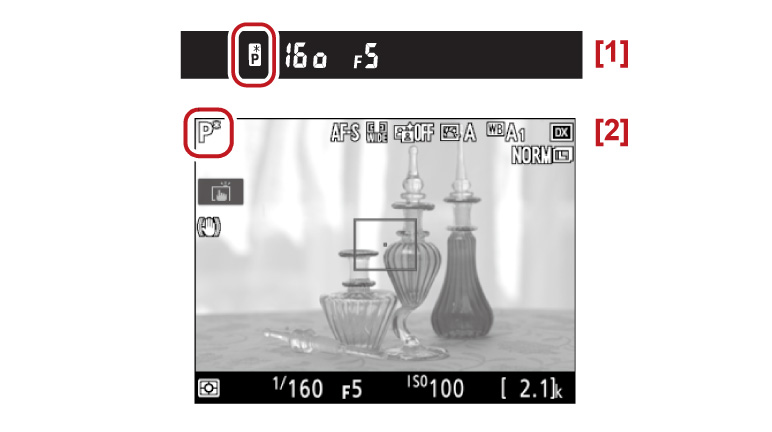
2: Monitor

To choose a shutter speed, rotate the main command dial while the exposure meters are on.
Shutter speed can be set to “x250” or to values between 30 s and 1/8000 s.
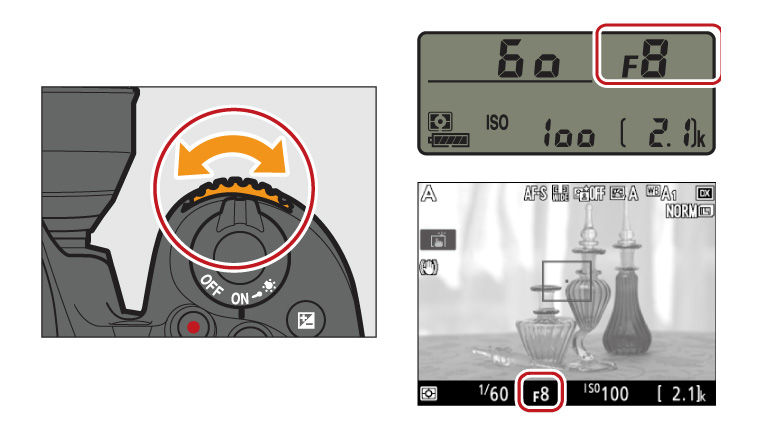
To choose an aperture between the minimum and maximum values for the lens, rotate the sub-command dial while the exposure meters are on.
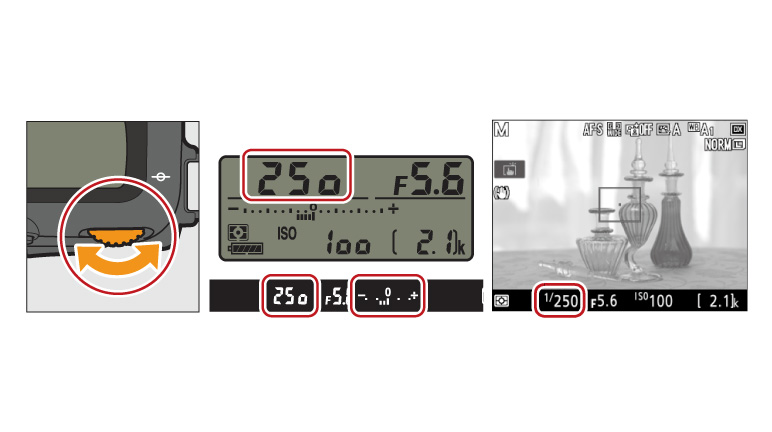
In manual exposure mode, you control both shutter speed and aperture. While the exposure meters are on, rotate the main command dial to choose a shutter speed, and the sub-command dial to set aperture.
Shutter speed can be set to “x250” or to values between 30 s and 1/8000 s, or the shutter can be held open indefinitely for a long time-exposure (bulb or --).
